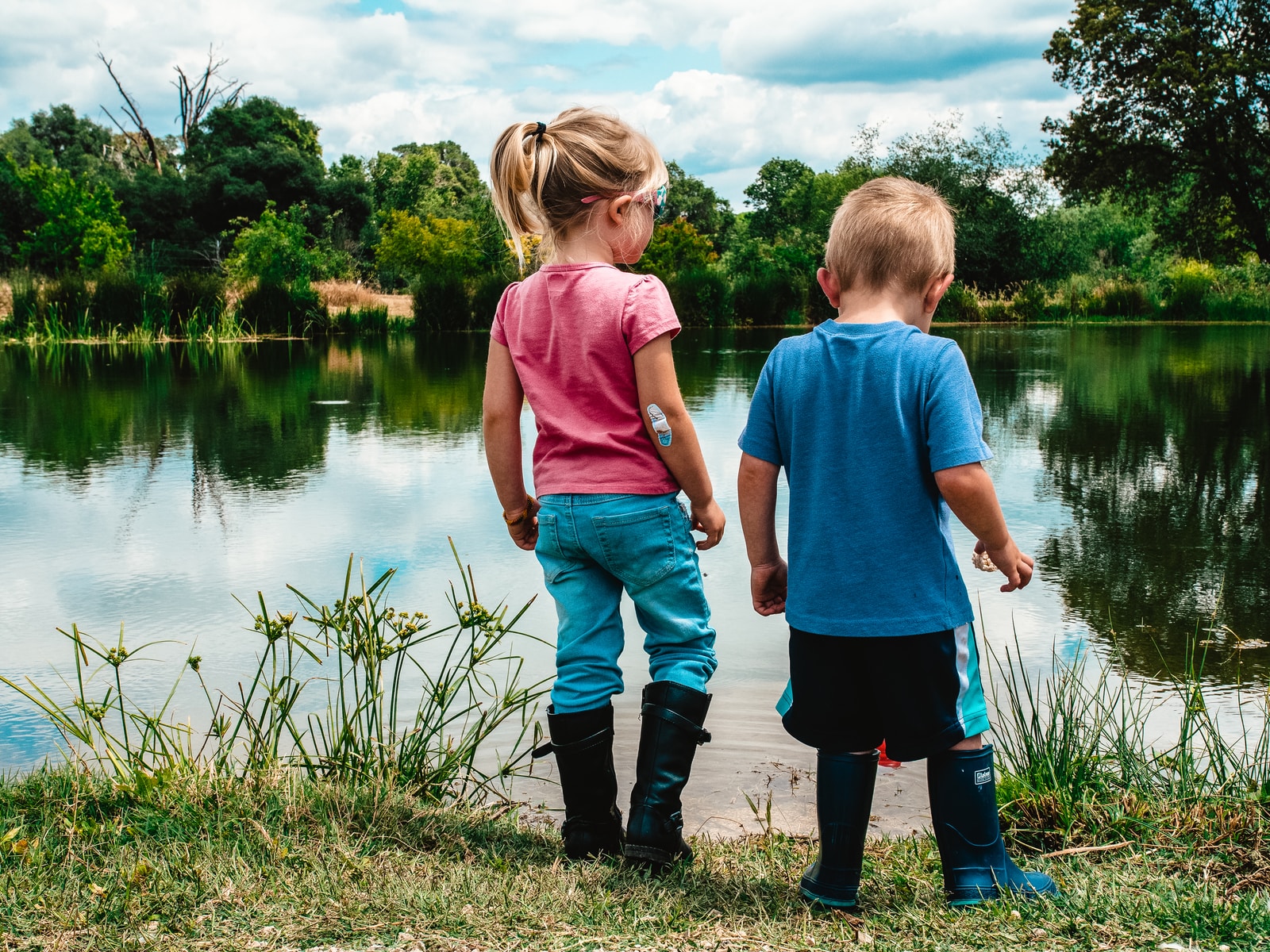Do you remember those days you spent running around outside with your friends, playing make-believe, making mud pies, and discovering all the cool things that are available in your own backyard? It seems like kids don’t get enough of that these days, doesn’t it? Let’s change that!
Getting connected with nature is so important for children. These days, kids have so many options for entertainment beyond going outside and getting dirty! Connecting with nature is so important for expanding your child’s horizons beyond the screens, teaching them the natural wonders of the universe, and educating them on how to care for the environment.
In this blog, we’re going to go over why exploring nature with children is important and how you and your child can explore nature together safely!
Why Exploring Nature with Children is Important
Before we get into how to explore nature with children, let’s talk about why it’s so important!
1. Mental health
Getting outside and connecting with nature is proven to be a natural stress and anxiety reliever! Spending too much time online and looking at screens can make your child feel tense, negatively impact their self-esteem, and can give your child a false sense of reality. Getting outside can provide as much entertainment – or more! – and show them that there’s so much more to life than being online all the time.
2. Education
There are millions of things to learn about right in your backyard or local park. When your child spends time around nature, their natural curiosity will be piqued! They will likely want to learn more about what they see – from trees to flowers to animals and bugs! When your child sees, hears, or feels something that they don’t understand, they will want to find answers. This can either be a moment when you can teach them or a chance for you to learn something new together!
3. Physical health
Sitting inside all day and looking at screens can have serious negative effects on physical health. Too much screen time can cause headaches, eye strain, poor vision, and bad posture; too much couch time can lead to obesity, poor physical development, and overall weakness. Getting outside, whether it’s to walk, run, bike, or hang on the monkey bars will promote healthy bones, muscles, joints, and hearts!
4. Confidence
Spending time outside and learning new things can help your child build confidence in themselves! When they learn how to climb up a new section of a jungle gym, roast a marshmallow, plant flowers, or water the garden, they will begin to understand how amazingly capable they are! This will show them that they can do anything they set their mind to – and they’ll be excited to learn and try new things.
How to Explore Nature with Children
Now that you know why exploring nature is so important, let’s talk about how to explore nature with children!
1. Stay safe
Of course, the most important thing is that you explore nature safely. Stick with your child at all times or make sure they are always within your field of view. Dress them in appropriate clothing – sturdy shoes or waterproof boots, warm clothing if it’s cold outside, long pants if they will be walking around in sticks and high grass. Remember to wear sunscreen and bug spray, and always check for ticks when they get back inside!
2. Let your kids take the lead
See where your child’s natural curiosity takes them. Do they want to run around? Climb on things? Build little hideaways? Pretend to make food with dirt, water, and plants? Dig a hole to the other side of the earth? All of these can help your child learn about different aspects of nature and can show you what they are interested in!
3. Ask open-ended questions
Asking your child open-ended questions helps them explore their new world even further. When they find something, ask questions like:
“What does it look like?”
“What does it feel like?”
“How does it move?”
“What does it smell like?”
Talk about the different attributes everything has – the shape of the leaves, the texture of the soil, and the color of the grass. The more your child sees and internalizes, the more they will understand the world around them.
4. Get hands-on
Children learn best through touch. Giving something a gentle poke might be all they need to understand it a little better. For example, if you see a toad sitting on the ground, you can gently touch it to show your child how it hops! If you see a patch of moss, you can show them how to gently stroke it and see how soft it is. You can pick up a log or large rock and show your child how many bugs are thriving in the damp darkness. That said, remember to teach your child that it’s important to leave nature as you found it. You don’t want to hurt any of the bugs or animals, and you don’t want to take away their home!
5. Allow children to draw their own conclusions
Give your child a chance to figure out what is going on in the world around them before you tell them what is correct. This allows their brains to work hard and get creative! For example, when they see a red leaf for the first time, instead of telling them how the leaves change each fall, ask, “What colors were the leaves last week? Why do you think they’ve changed? What do you think will happen next year?”
Exploring Nature at Meaningful Beginnings
Here at Meaningful Beginnings, we make it a point to teach children about nature through books, movies, and playing outside. We will always make sure your children are wearing appropriate clothing and are well protected from the heat, cold weather, and hot sun. Get in touch with us today to learn more about how we explore nature at Meaningful Beginnings!








